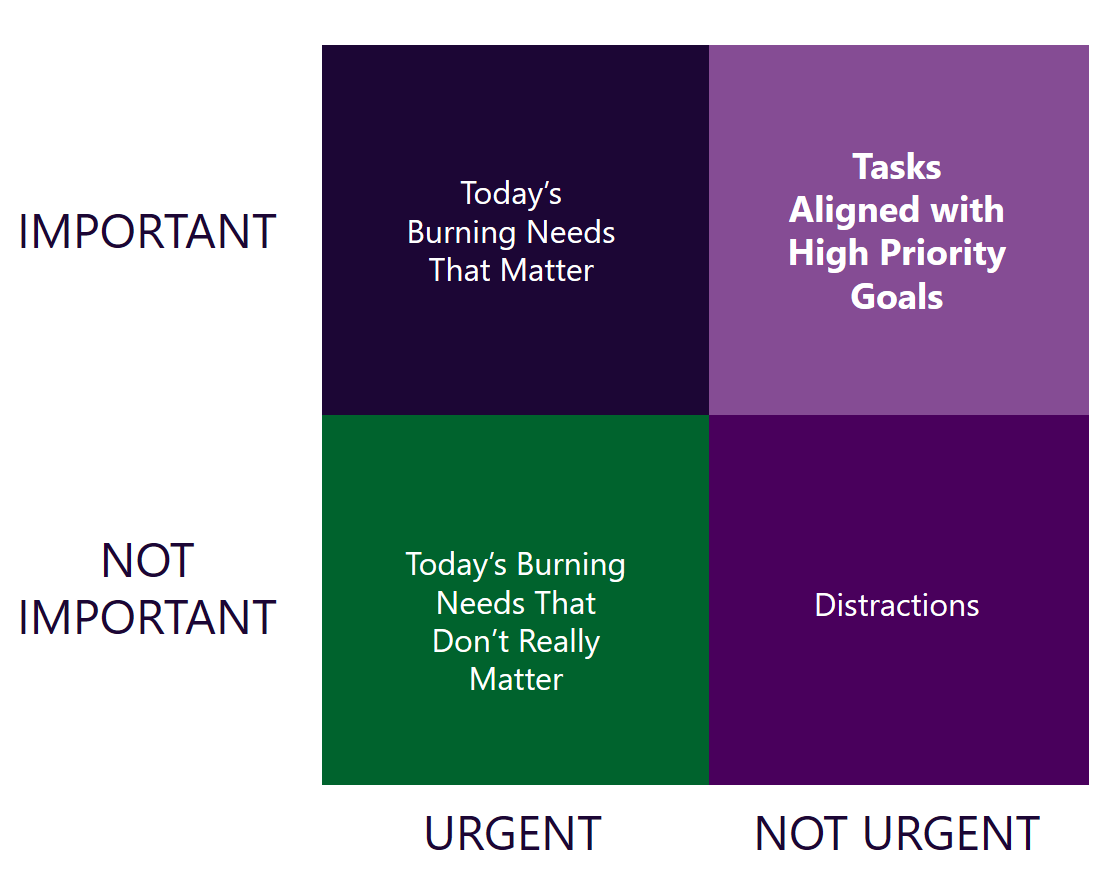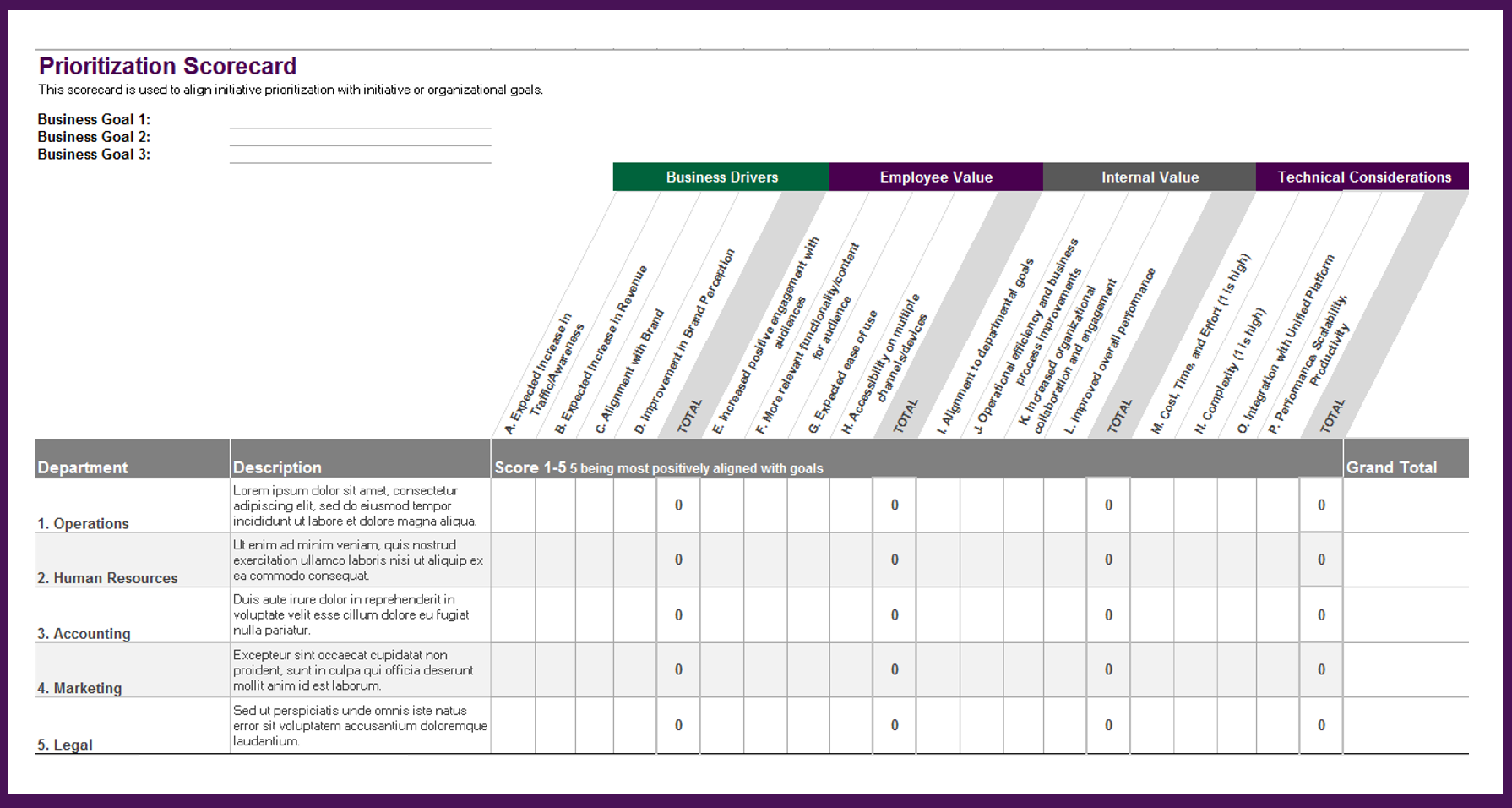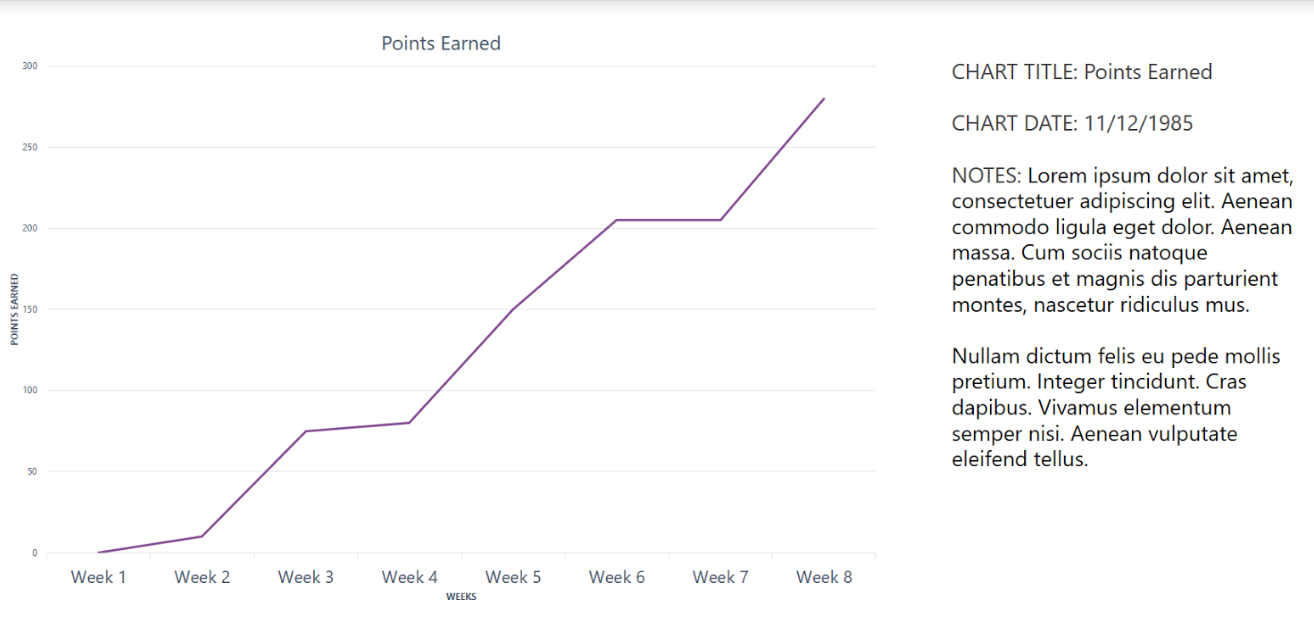If you’re anything like me, you’ve set some ambitious goals for 2017. Whether at the individual level or the enterprise level, there will always be limited time and resources, so it’s important to prioritize the goals you want to achieve. In this blog, I’d like to share some tips, tools, and techniques for prioritizing your organization’s Knowledge and Information Management (KIM) goals this year so that it becomes your most successful one yet.
1. Decide How You Will Decide
At the core of decision making, you’ll find a sense of identity and a set of values. That is, how you define who you are as an organization and what’s important to you is often what drives the decisions you make. This differs from organization to organization– for some it may be revenue gained from a public-facing website, while for others it may be more mission-driven objectives around knowledge sharing via the organization’s intranet.
“Deciding how you will decide” means reflecting on the factors that are most critical to reaching your organization’s potential, then designing a tool to help you measure the degree to which each of your goals will bring you closer to doing so.
This tool can be as simple as a quad chart, a la Stephen Covey:

Or, this tool can be more sophisticated like a weighted prioritization matrix with quantitative and qualitative measures like the one below.

At EK, we’ve used a prioritization scorecard like this one to help our clients get a handle on large scale KIM change efforts that involve the entire organization. It’s helpful in breaking down the effort into manageable pieces, such as departments, projects, or releases. Each sub-effort can then be analyzed and assessed along a scale of relative priority measures.
Based on this analysis, you can generate a set of graphs to plot your results. For example, Value vs. Effort or Audience vs. Project Size. A visual we find particularly insightful at EK is Business Value vs. Technical Complexity vs. Foundational Value, which you can see plotted in the sample graph below.

Focusing on the foundational elements of your KIM system, such as your governance plan, content type templates, and style guides will greatly benefit all of your other efforts that come after it. This is especially true when you can deliver foundational elements with high business value and low technical complexity.
2. Limit Your WIP
Once you’ve identified the order in which you’ll tackle your goals, you’ll need to set a WIP. WIP stands for “Work in Progress” and limiting your WIP means choosing one thing to focus on at a time, or more as your resources allow.
I’m just as guilty as anyone in trying to do everything all at once, but so much energy is wasted with each cognitive shift. You may appear to be very busy when you’re multi-tasking, but actual results come from taking a deeper dive into one thing, getting into a state of flow, and creating something that didn’t previously exist whether that’s a solution, deliverable, a new piece of functionality, or thought piece. It’s even more exciting when you’re able to get an entire team or organization passionately working towards the same goal.
There are two tools I recommend for allowing you to see the big picture and the little picture simultaneously:
Big Picture: Create a Roadmap
Creating a roadmap like this one will show you how you’ve prioritized your goals, when you’ll be working on each goal, and it will also give you a realistic picture of how much time you have to meet all of your commitments.

It’s important to be as realistic as possible when estimating how long it will take you to achieve each goal, but the real secret is to take into consideration the day-to-day tasks you’ll have to attend to that may not necessarily be aligned with your primary objective.
Little Picture: Set up a Kanban Board
Decomposing your goals into actionable tasks is key. A Kanban Board like Trello is an effective way to create a list of everything you have to do, which then allows you to move each item along to a “done” column as you complete each task.

Make sure that you monitor how many items are in your “In Progress” column because limiting your WIP means starting and completing a small number of tasks rather than just starting a whole lot of tasks.
3. Track Your Progress
Everyone loves getting “points.” Whether they’re brownie points, financial points, rewards points, or points in a game, you feel like you’re winning as your number of points rise. Assign points to each of the tasks you’ll need to complete in order to reach your ultimate goal. As your team completes each task, reward yourselves with points and watch your progress climb using something like this Burn Up chart below.

Charts like these will also help you to quickly see when you’re flatlining. This should be a signal that you either need to redirect your focus or reassess your priorities.
4. Celebrate Your Successes
Take time after each win to acknowledge and reward your accomplishment. A little celebration after each win could be just the fuel your team needs to keep going even stronger.

As a part of your celebration, create opportunities to learn from what went right and what could have improved as you worked towards each success. Here are a few tips from my previous blog about how to do so by facilitating retrospectives.
Being agile means focusing on the most important things first and continuously reassessing what’s at the top of the list. By doing so, you’ll be able to demonstrate value throughout the year rather than getting to the end only to realize that you haven’t completed much at all. Interested in how we’ve used these tools and techniques for large-scale digital transformation initiatives? Contact Enterprise Knowledge at [email protected].
